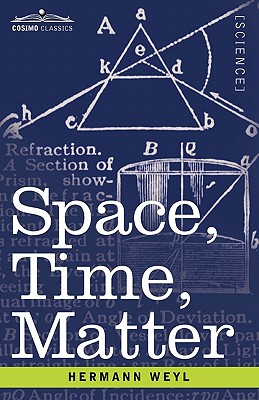Synopsis
In this classic text first published in German in 1918-this is a translation by HENRY L. BROSE (1890-1965) of the 1921 fourth edition-Weyl considers the role of Euclidean space in physics and the mathematics of Einstein's general theory of relativity, exploring: - foundations of affine and metrical geometry - conception of n-dimensional geometry - tensor algebra - the stationary electromagnetic field - Riemann's geometry - affinely connected manifolds - space metrics from the point of view of the Theory of Groups - relativistic geometry, kinematics, and optics - electrodynamics of moving bodies - mechanics of the principle of relativity - mass and energy - gravitational waves - concerning the interconnection of the world as a whole - and more. HERMANN KLAUS HUGO WEYL (1885-1955)was a German mathematician who spent most of his life working in Zurich, Switzerland. When the Nazi party began to gain power he fled to a job at the Institute of Advanced Study in Princeton, New Jersey where he continued to develop his representation theory. He was one of the most influential mathematicians of the 20th century. He greatly impacted theoretical physics and number theory and was the first to combine general relativity and electromagnetism
Présentation de l'éditeur
Theory of Kelativity has advanced our ideas of the structure of the cosmos a step further. It is as if a wall which separated us from Truth has collapsed. Wider expanses and greater depths are now exposed to the searching eye of knowledge, regions of which we had not even a presentiment. It has brought us much nearer to grasping the plan that underlies all physical happening. CA lthough very recently a whole series of more or less popular introductions into the general theory of relativity has appeared, nevertheless a systematic presentation was lacking. I therefore considered it appropriate to publish the following lectures which I gave in theS ummer Term of 1917 at theE idgen. Technische Hochschule in Zurich. At the same time it was my wish to present this great subject as an illustration of the intermingling of philosophical, mathematical, and physical thought, a study which is dear to my heart. This could be done only by building up the theory systematically from the foundations, and by restricting attention throughout to the principles. But I have not been able to satisfy these self-imposed requirements :the mathematician predominates at the expense of the philosopher. )T he theoretical equipment demanded of the reader at the outset is a minimum. Not only is the special theory of relativity dealt with exhaustively, but even Maxwell stheory and analytical geometry are developed in their main essentials. This was a part of the whole scheme.
(Typographical errors above are due to OCR software and don't occur in the book.)
About the Publisher
Forgotten Books is a publisher of historical writings, such as: Philosophy, Classics, Science, Religion, History, Folklore and Mythology.
Forgotten Books' Classic Reprint Series utilizes the latest technology to regenerate facsimiles of historically important writings. Careful attention has been made to accurately preserve the original format
Les informations fournies dans la section « A propos du livre » peuvent faire référence à une autre édition de ce titre.
